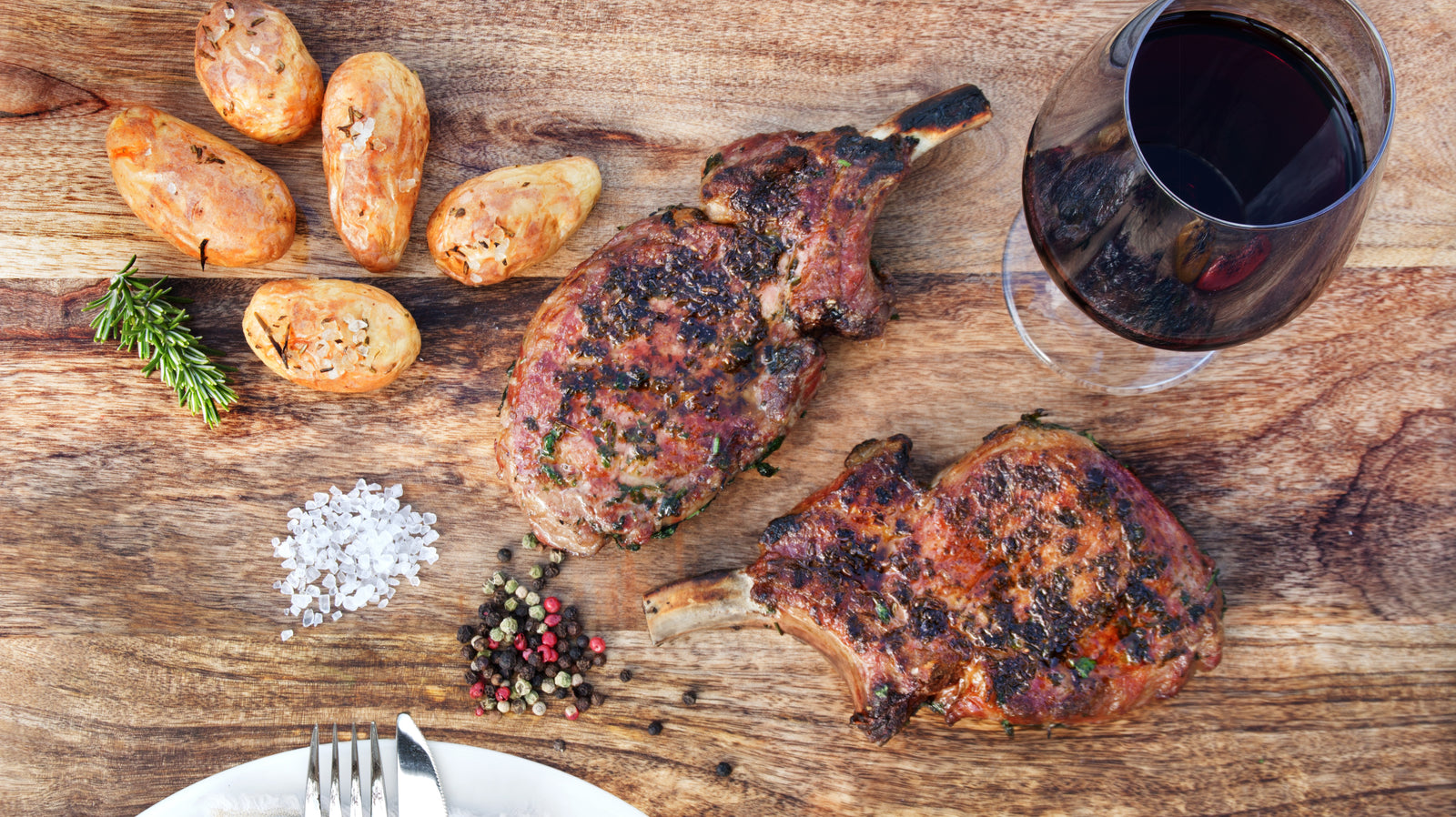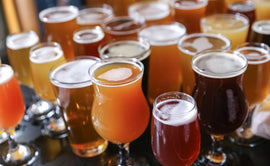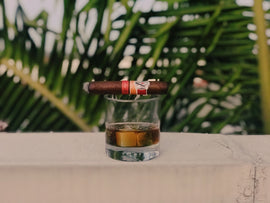This is a wonderful time of the year. Citrus trees are blooming, clover and mustard are flowering in the vineyards, and in the market, pea shoots, squash blossoms, fresh fava beans, baby artichokes and asparagus are plentiful. If you haven’t already, it’s time to dust off the patio furniture and fire up the grill! Our two wines this month are the perfect wines for the season, although they would be perfect anytime, anywhere. The 2015 Sarrazin Rully and the 2015 Mustiguillo Bobal are wonderful to have on their own, but will shine when paired with the right foods. What could be better than sipping on a glass of delicious white Burgundy on a sunny afternoon or warm, starry night with a fresh-picked garden salad and grilled Spring vegetables? Or how about washing down grilled lamb chops or a juicy burger with a unique, juicy Bobal from Spain? Sounds great to me!
Sarrazin "Sans Nom" Rully
With the sole exception of Chablis, but including Beaujolais, all of Burgundy lies along a rather narrow north-south strip that extends no more than 100 miles along the west bank of the Saône River. The most favored vineyards are on east-facing limestone hillsides, particularly the 30-mile stretch near Beaune called the Côte d'Or, which rests on a single long escarpment. The heart of Burgundy, the classic villages of the Côte de Nuits and Côte de Beaune, actually accounts for only about 17 percent of the total Burgundian vineyards. Just below the south end of the Côte d'Or, the continuous ridge breaks into individual hills, collectively called the Côte Chalonnaise.
The Côte Chalonnaise occupies a slope running south for roughly 15 miles from Chagny, at the foot of the Côte de Beaune, to Montagny, at the top of the Maconnais region. The Côte Chalonnaise is named after the town of Châlon-sur-Saône where, in ancient Gaul, wine was shipped upriver from the south and would be off-loaded for overland transport northwards. There are five communal appellations in the Côte Chalonnaise; from north to south they are Bouzeron, Rully, Mercurey, Givry, and Montagny. All of the appellations except one, Montagny, which grows white exclusively, produce both red and white wines in varying proportions as you move from one town to the next. The limestone slopes take on a more dispersed character here, and the best vineyards, the 1er Crus (there are no Grand Crus in the Chalonnaise) are broadly located on south-facing, limestone-rich outcrops. Because the vines on the Côte Chalonnaise rise to significantly higher altitudes than those of the Côte d'Or, harvests tend to be later and full ripening of the grapes more variable.
Less than 10 miles from Meursault in the Côte d'Or, the northernmost Chalonnaise village, Rully, produces about equal amounts of Pinot Noir and Chardonnay. The village Rully sits below the eastern side of a low-lying limestone ridge named La Montagne de la Folie, whose name translates literally as 'Mountain of Madness'. The ridge is effectively a southern extension of the Côte de Beaune escarpment. The Rully appellation was created in 1939, around the time that the other Chalonnaise communes were being granted their own individual appellations. Since that time, more than 20 vineyard sites have been marked out as being worthy of Premier Cru status. They produce around a quarter of the appellation's output and make up about one-sixth of its 865 acres of vines. The finest Rully vineyards are on the eastern slopes of La Montagne de la Folie, and benefit from light-reflective, free-draining limestone soils and an easterly aspect which enjoys the best of the morning sunshine. The lower-lying vineyards, away from the ridge, tend to have lighter soils with less limestone and more sandstone.
The Sarrazin name is an important one to know in the Côte Chalonnaise. Headquartered in the tiny hamlet of Jamblès, within the Givry AOC, the Domaine includes about 35 hectares of vineyards across a number of appellations, all farmed according to lutte raisonnée principles; this means that herbicides, pesticides, and any other non-organic inputs are prohibited except in serious emergencies. Brothers Guy and Jean-Yves Sarrazin have run the Domaine since the mid-1990s.
The 2015 Sarrazin “Sans Nom” is 100% older-vine Chardonnay from two “lieux-dits” (or just below Premier Cru status) vineyards, Chaponnières (facing east, at 675 feet above sea level) and Varot (facing south, at 1,050 feet above sea level).
According to French law, neither of these vineyards may accompany each other on the same label, hence the Sarrazins came to call the cuvée “Sans Nom” or “no name”. The grapes were hand-harvested, and after gentle pressing, the wine was fermented on indigenous yeasts in temperature-controlled, stainless-steel tanks. Once fermentation was complete, the wine was transferred and aged in 500L oak barrels, with 30% new wood. It was then bottled unfined and unfiltered.
The 2015 Rully “Sans Nom” is ripe and fleshy. It offers aromas of fresh nuts, melons, citrus, custard, and pineapple. On the palate and finish the wine “freshens up” with more fresh, tangy citrus, green applesauce and a mineral kick. A touch of new oak smooths any sharp edges. This wine will pair wonderfully with roasted fish, like monkfish or halibut, and rich chicken dishes with wild mushrooms. Dishes with cream sauces or Mediterranean-inspired vegetable dishes, such as artichoke and fava bean stew, tagines, or spanakopita, work beautifully as well.
2015 Sarrazin Rully “Sans Nom” is $25.00/bottle, $270/case.
Bodegas Mustiguillo Finca Terrerazo
Spain is fortunate in having a treasure trove of mature indigenous vines, many planted 50-100 years ago. Some were pulled up in the 1980s and 1990s in the rush to plant international varieties, but many remain. Bobal has been grown in southeast Spain since the 15th century and possibly longer. The name is derived from bovale, or bull, as the bunches of grapes are said to be shaped like a bull’s head. In the mid-19th century Bobal proved resistant to the deadly vine disease Phylloxera and plantings increased dramatically. In Spain, Bobal is permitted in four different DOs (Denominación de Origen): Valencia, Manchuela, Ribera del Júcar and Utiel-Requena. The vast majority of Bobal vines are to be found in the little-known DO of Utiel Requena. It is part of the province of Valencia, inland from the coast and the capital city. It is one of the least known Spanish Dos, yet there are more than 35,000 hectares of vines and more than 100 wineries there. Rich in history, peppered with medieval towns and surrounded by highlands and wild areas, DO Utiel-Requena has a winemaking tradition going back thousands of years. The whole region is basically a slope, with vineyard elevations starting at around 600 meters and going up to 900 meters above sea level (towards La Mancha). There is hardly a region of Spain where the weather is more extreme than in Utiel-Requena. Located in the climatic transition zone between the blistering summer heat and continental influence found on the inland high plateau of neighboring La Mancha and the Mediterranean moderation of the coast, the DO reaches over 100°F in the summer – but drops to 15°F in winter. Regular hailstorms pummel the vineyards and rainfall is extremely low, under 20 inches per year.
Visionary winemaker Toni Sarrion founded Bodega Mustiguillo in 1999 with the intent to produce top quality wines from the Bobal grape variety. Despite being one of the most important grapes in Spain, Bobal was historically dismissed as a grape solely for bulk wine production. Toni knew, however, that Bobal had much more potential and saw it thrive in the unique terroir of El Terrerazo in Spain’s province of Valencia. In 2010 he was successful in having authorities recognize the distinctiveness of his land and was awarded a protected designation of origin (DOP) status – Sarrion now has all his vineyard holdings in the El Terrerazo DOP. Some of the oldest Bobal vines in the world (planted between 1919 and 1945) flourish here. At an altitude of 800-824 meters, the El Terrerarzo Estate is comprised of 89 hectares of contiguous vineyards on primarily limestone soils. The grapes are farmed using 100% organic viticulture and without irrigation in very poor, sandy soils. Ever evolving and pushing the quality level forward, Toni focuses on clonal selections and strict vineyard management to produce smaller and looser clusters which result in wines of finesse and balance.
Bodegas Mustiguillo’s 2015 Finca Terrerazo is made from 100% Bobal that comes from two plots planted in 1945 and 1970 on dolomite-limestone soil with chalky sand at 800 meters. The plots are vinified separately with indigenous yeasts and undergo malolactic in 225L French oak with batonnage. Mustiguillo has moved away from the use of overt American oak, as seen in earlier vintages in favor of concrete and French oak. The final blend spends 21 months in French oak.
Bodegas Mustiguillo’s 2015 Finca Terrerazo is very distinctive with great personality, though it needs some aeration to really express itself. Ripe black fruit, deep mineral undertones, intense notes of balsam, aromatic herbs, and some floral, earthy, spicy nuances assault the organoleptic senses. On the palate the wine is smooth and savory. It has some bold tannins and a solid structure. Still, there is tremendous freshness, an enticing mineral background, some savory/bitter nuances, a clear expression of terroir, and a very long, rich, but youthful finish.
Bodegas Mustiguillo’s 2015 Finca Terrerazo goes great with all types of cheese, red meats, fatty fish, casseroles, and tomato-based pasta dishes. Bobal pairs beautifully with Valencian regional dishes such as Paella Valenciana, Tortilla Espanola- caramelized onion and potatoes slow-cooked in olive oil with egg added and cooked into a thick omelette, or All-i-Pebre- a mix of garlic, paprika, and ground almonds, in which chunks of fresh eel and potato are simmered.
Bodegas Mustiguillo’s 2015 Finca Terrerazo is $26.00/bottle, $280.80/case.





